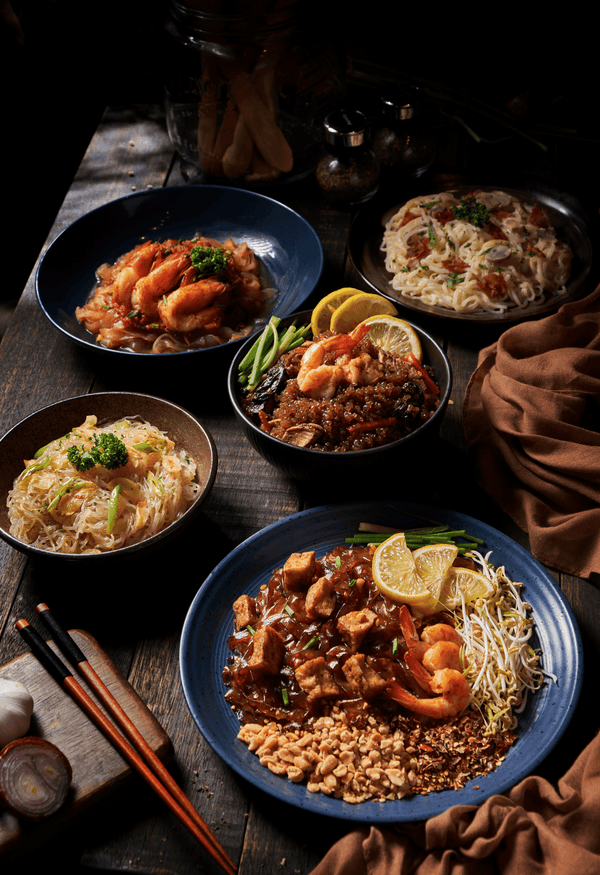Your Cart is Empty
November 16, 2021
Diabetic Diet: What to Eat & What to Avoid
It is said that diabetes works like termites – it causes slow, hidden, but significant damage in the body. Therefore healthy eating for diabetics is not a luxury but an absolute necessity. A diet low in carbohydrates can help people with diabetes manage their sugar levels and also reverse some other effects of diabetes like heart disease and weight gain.
Type 2 diabetes results from impairment in the way the body regulates and uses glucose as fuel. Although Type 2 diabetes is more common among adults, the percentage of obesity in children has resulted in more cases of Type 2 in the younger generation.
However, diabetes is not a death sentence - with a healthy diet and health follow-ups, individuals suffering from diabetes can still lead a fulfilling life with a healthy relationship with food. A healthier diet will also help diabetic patients control their blood glucose and cholesterol levels.
The good news is that you can effectively manage both Type 1 and 2 by eating well and exercising. For example, you can reduce your intake of crackers, pasta, rice, bread, and beer which are high in carbohydrates. Instead, you can try the ketogenic (keto) diet meal plan since the keto diet emphasises a very low carbohydrate, high-fat, and moderate-protein diet.
This diet plan includes, but is not limited to the following:
- Milk
Milk, particularly almond and coconut milk, is an excellent source of calcium, potassium, and several B Vitamins.
- Beans and Legumes
These are high in fibre and protein but must be included in small amounts in a keto diet.
- Vegetarian Diet
Eat a lot of grains, nuts, fruits, vegetables, and seeds.
1. Choosing Healthier Carbohydrates
There are several sources of healthy carbohydrates that can be consumed by diabetic patients without spiking or lowering their blood sugar levels. Certain carbohydrate choices that include high fibre options can even regulate blood sugar levels.
These include:
- Whole grains – brown rice, buckwheat, oatmeal
- Bran cereal
- Popcorn
- Baked beans
- Fruits
- Unsweetened milk and yoghurt
You can also substitute your usual options for carbohydrates with buy low-carbohydrate pasta that you can easily find online in Singapore. In fact, AMAZING LOKARB's range of Shirataki noodles and rice are a great choice since they are made of konjac flour and are reputable for their health benefits.
2. Find Out What Foods to Eat
If your diet is high in sodium, you might have a higher probability of suffering from high blood pressure which may lead to heart disease or even heart failure. Instead of using salt to season your food, you can try to use other spices and herbs for flavour.
3. White Meat Over Red Meat
White meat ranks among the highest dietary sources of protein. Particularly, poultry is known to contain a wide range of essential micronutrients. On the other hand, red meat contains large amounts of myoglobin and has been listed by the WHO as potentially carcinogenic. Deep-sea fish like salmon have a lot of omega-3 fatty acids which prevent cardiovascular complications.
Begin Your Journey to Better Health Today
As the age-old saying goes, you are what you eat. Your decision to start eating healthily today will definitely reflect in your health report in years to come. Make the wise decision to live and eat healthily today.
Also in Blog

Is Childhood Obesity Really a Thing?
November 29, 2021
Childhood obesity has been a prevalent issue in Singapore for the past two decades. In 2016, the obesity rate among children who are schooling locally stood at 12%. According to a survey conducted by the National Population Health in 2017, the proportion of overweight children in mainstream schools had increased from 11% in 2013 to 13% in 2017. This number has remained on an upward trajectory since – and it is concerning.

The History of Chinese Noodles in Asia
November 27, 2021
If one were to trace the origins of the noodle, they would end up in the largest of all Asian countries - China. Noodles are one of the most important traditional staple foods in Asia. Typically made from unleavened wheat dough and are stretched, extruded, or rolled, and then cut into varying shapes, noodles account for approximately 20%–50% of the total wheat consumption in Asia. The noodle has the capability to adequately reflect the history, regional differences, social changes, traditional values and cultural identity of China.

4 Reasons Why There's An Obesity Epidemic
November 21, 2021
According to the World Health Organization (WHO), global obesity rates have tripled since 1975. During the year 2016, more than 1.9 billion adults were overweight. Out of them, nearly 650 million were obese, but why is 47 percent of the United States population expected to be obese by 2030?
Recent Articles
- Is Childhood Obesity Really a Thing? November 29, 2021
- The History of Chinese Noodles in Asia November 27, 2021
- 4 Reasons Why There's An Obesity Epidemic November 21, 2021
- Diabetic Diet: What to Eat & What to Avoid November 16, 2021
- Are There Good and Bad Carbohydrates? November 10, 2021
What's Your Story?
We love inspiring stories of people who have made healthy and positive changes in their lives. Share your story on Instagram and tag us #amazing_lokarb to win free box of noodles!
newsletter signup
Be the first to know about upcoming sales and promos. Get a 10% discount coupon when you subscribe!


